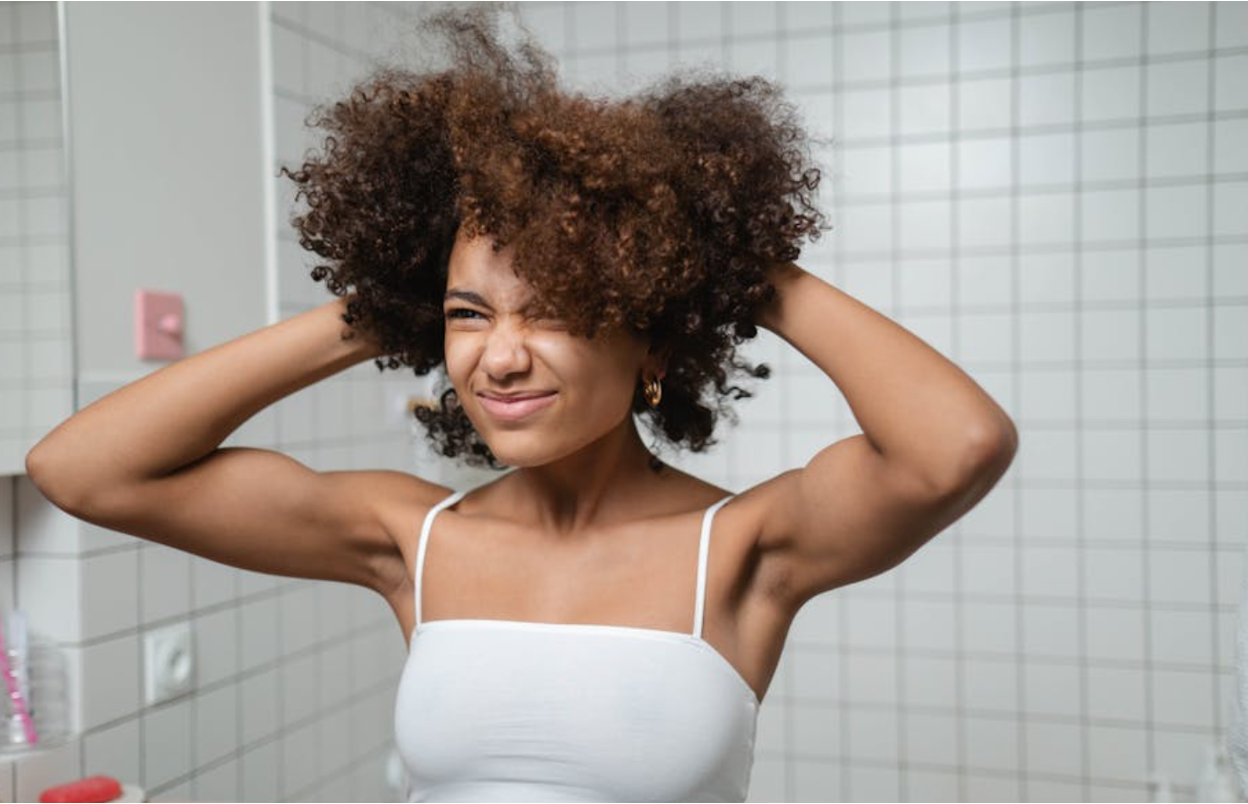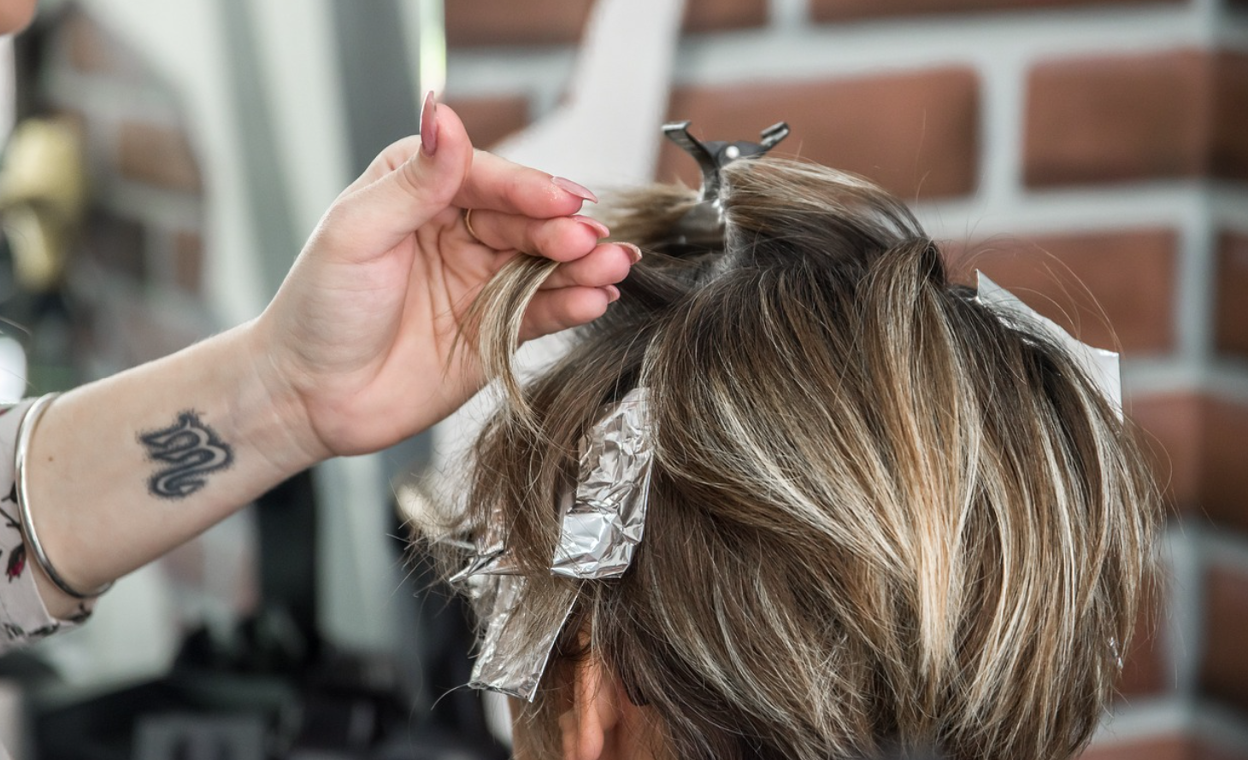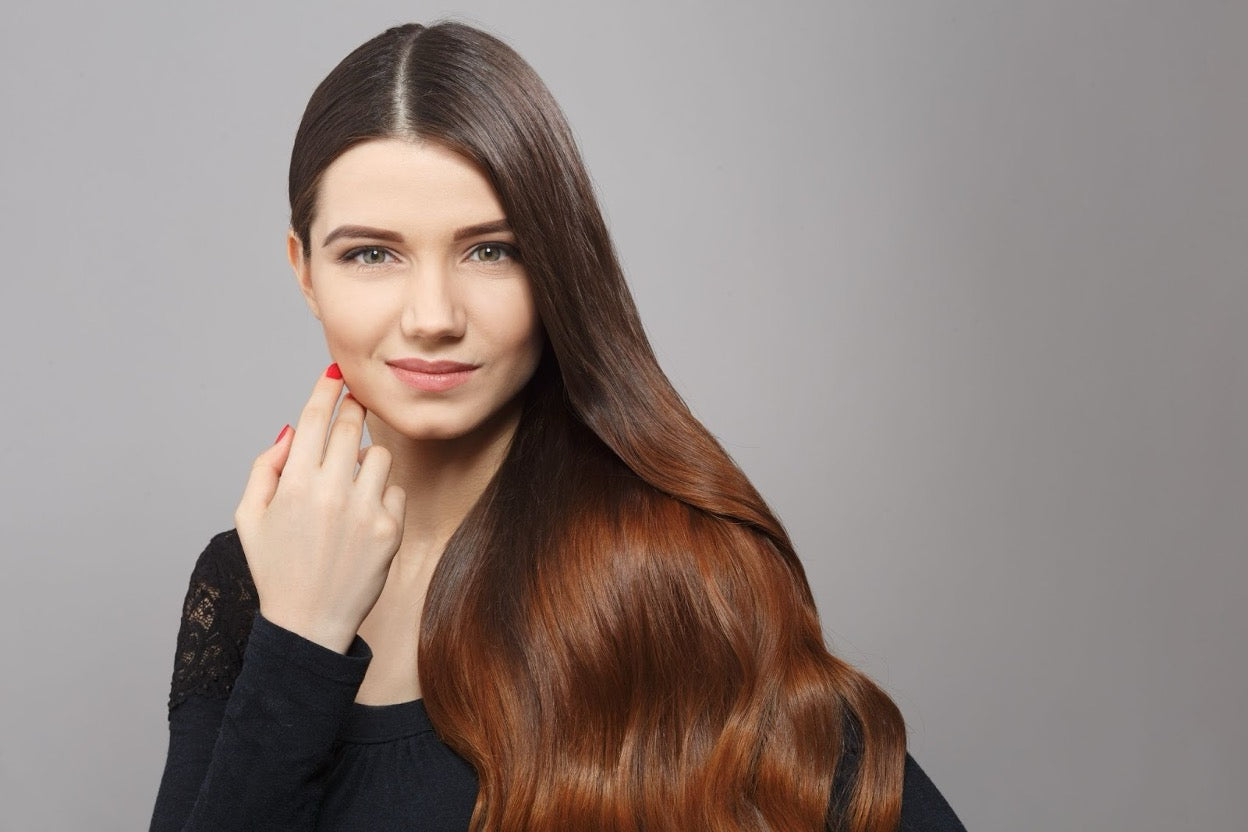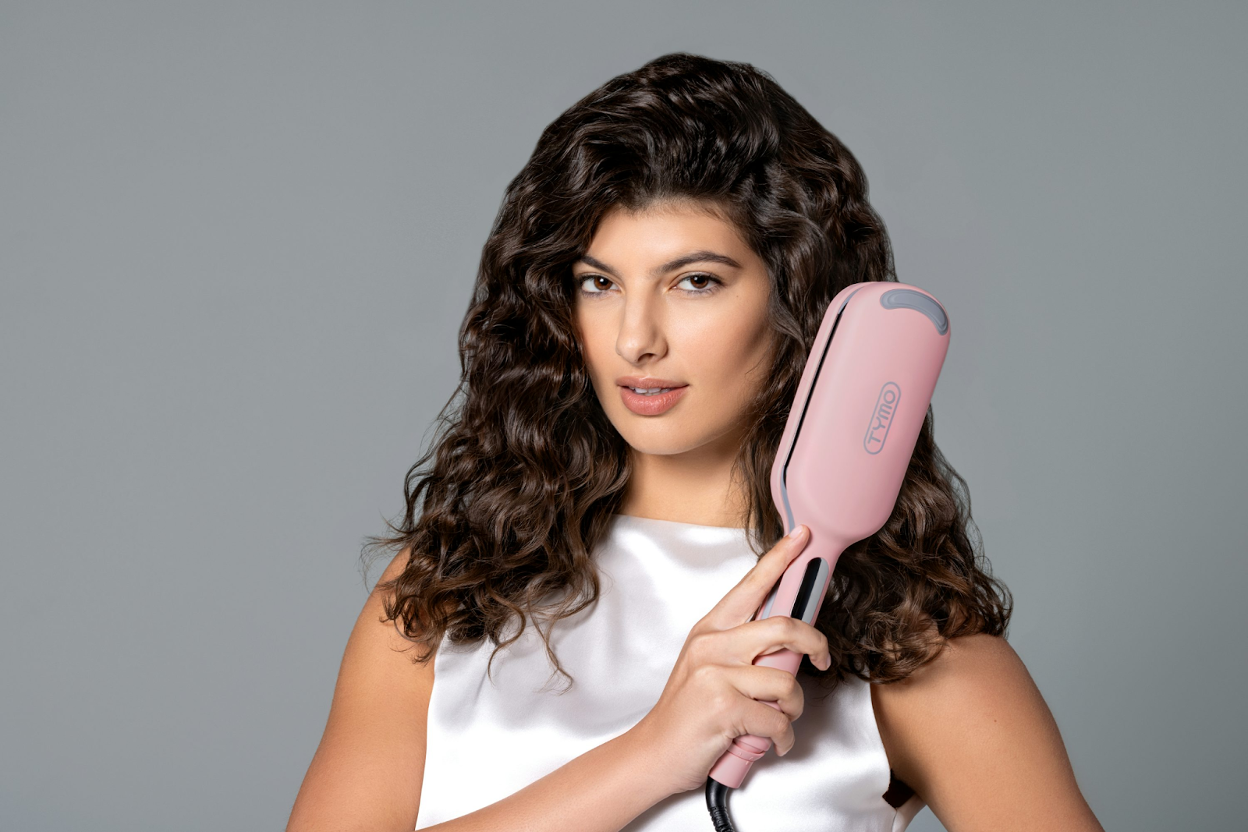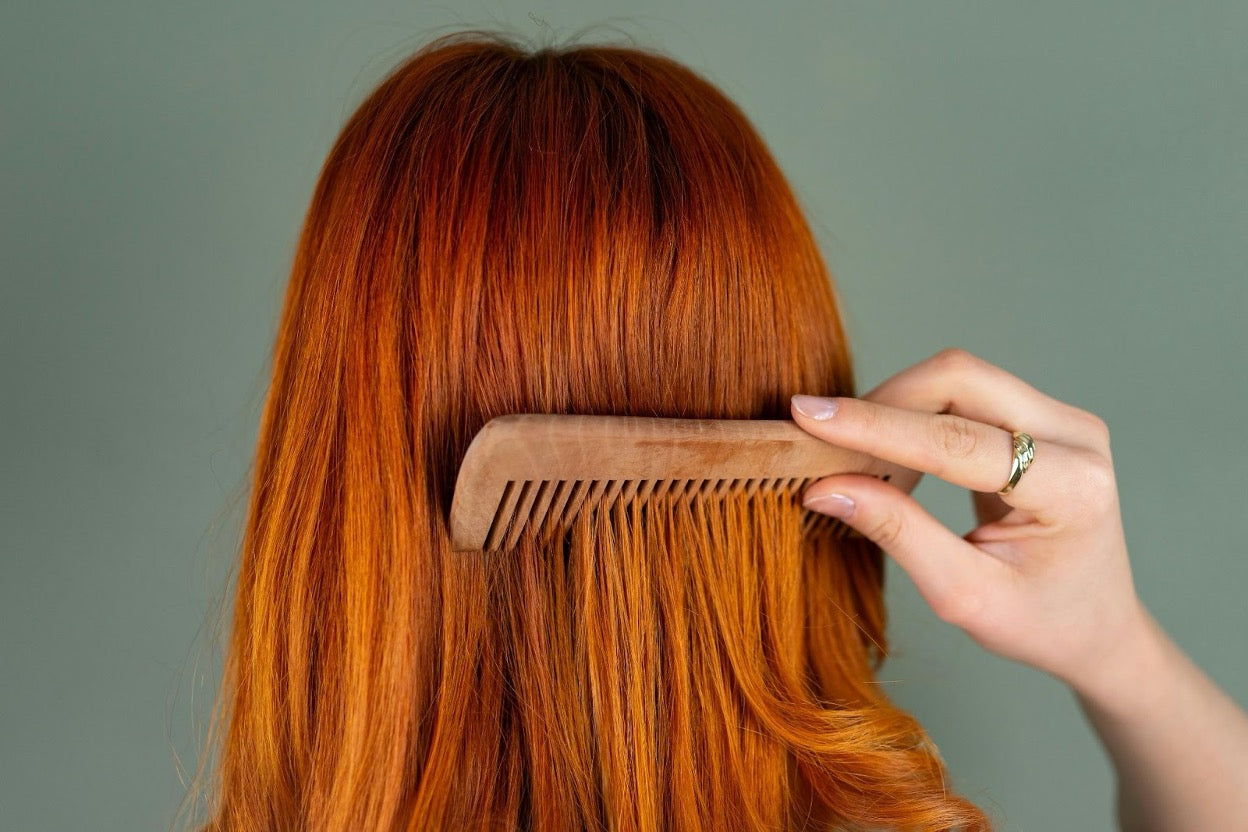Hair Texture Change After Pregnancy: Causes & Solutions
BY TRYBELLO
Nov 20, 2025

Key Takeaways
- Postpartum hair changes are common, including texture, curl pattern, thickness, and volume, often coinciding with shedding and requiring adapted care routines.
- Hormonal shifts during and after pregnancy directly affect hair growth cycles, follicle structure, and scalp oil production, driving changes in hair texture and manageability.
- Hair may develop new curls, lose volume, grow fine “baby hairs,” or become drier and more brittle, with each change requiring targeted styling, hydration, and gentle handling.
- Hair recovery timelines vary; shedding peaks around 3–4 months postpartum, and full texture stabilization can take 12–24 months. Genetics, age, and previous pregnancies influence whether changes are temporary or permanent.
- Postpartum hair can be supported with products that reduce shedding and nourish follicles, like Trybello Hair Helper Spray, which promotes thicker, fuller hair and healthier growth in a natural, safe formula.
Why Your Hair Isn't The Same After Baby: The Postpartum Hair Shift
The postpartum hair shift, as many hair stylists call it, is the noticeable change in hair texture, density, or curl pattern that occurs after childbirth. These changes can manifest differently for each woman, with some experiencing dramatic transformations while others notice subtle differences. Your previously straight hair might develop waves or curls, or your curly hair might relax into looser patterns. The thickness, shine, and overall manageability of your hair may also undergo significant changes.
This phenomenon is so common that many hair professionals have learned to ask their clients about recent pregnancies when they notice unexpected texture changes. What makes this experience particularly challenging is that these changes often coincide with the notorious postpartum shedding phase, creating a double adjustment for new mothers who are already balancing the demands of caring for a newborn.
“Doctor-Approved Natural Spray Rapidly Boosts Growth & Thickness.
Why 100,000+ Women Are Switching to Trybello!"
Join over 100,000 happy customers who've transformed their hair with our doctor-formulated spray in just 12 weeks, rated 4.8/5 by 40,000+ real users.
Proven Natural Ingredients
- • Caffeine Extract – Blocks DHT and boosts blood flow to follicles
- • Biotin – Direct scalp absorption, no pills needed
- • Castor Oil – Soothes inflammation and locks in moisture
- • Rice Water Extract – Strengthens hair and reduces shedding
120-Day Growth Guarantee: No results? 100% money back, no questions asked.
The Science Behind Postpartum Hair Texture Changes
Understanding why your hair texture changes after pregnancy starts with knowing what happens to your hair during pregnancy. The interplay between hormones and hair is complex, with pregnancy creating a unique environment for hair growth and retention.
How Pregnancy Hormones Affect Hair Growth
During pregnancy, hormone levels, especially estrogen and progesterone, surge. This extends the growth phase (anagen) of hair follicles, so fewer hairs fall out daily. Many women enjoy thicker, fuller hair during this time. Hormones can also change hair fiber behavior, sometimes making hair appear straighter or curlier. Additionally, shifts in scalp oil production can make hair feel oilier or drier, affecting texture and appearance.
What Happens When Hormones Drop After Birth
After childbirth, hormone levels rapidly decline, triggering a shift in your hair growth cycle. The extended growth phase ends, causing many follicles to enter the shedding phase at once, explaining postpartum hair loss that peaks around 3–4 months. These hormonal changes can also alter new hair’s structure, creating different textures, while scalp oil production readjusts, sometimes making hair unusually dry or greasy.

Hair volume can fluctuate after pregnancy, sometimes appearing flatter or thinner until follicles stabilize.
Why Hair Texture Can Change
Hair follicle shape determines curl: round follicles produce straight hair, while oval or asymmetrical follicles create waves or curls. Hormonal fluctuations during and after pregnancy can alter follicle shapes, leading to surprising texture changes. Genetics also plays a role, some dormant hair traits may appear post-pregnancy, so you might suddenly develop curls similar to a relative. Your hair’s response to these hormonal shifts ultimately determines whether it becomes curlier or straighter.
Common Hair Texture Changes After Pregnancy
Every woman’s experience is unique, but several postpartum hair changes are frequently reported. Understanding these patterns can help you adapt to your hair’s new characteristics.
Straight to Curly Transformations
A dramatic change many women notice is straight hair developing curls or waves. New curls may appear throughout the hair or in specific areas, creating uneven texture that requires different styling techniques. This change usually appears with new hair growth several months after delivery, meaning you may temporarily manage two textures—pre-pregnancy hair and newly growing strands.
Changes in Hair Thickness and Volume
Hair thickness can increase or decrease after pregnancy, affecting both appearance and styling. Volume changes are common, with hair sometimes feeling flatter or less full. These effects may be temporary or longer-lasting, depending on how your follicles respond postpartum.
New Hair Growth and “Baby Hairs”
Postpartum shedding often leaves a halo of short “baby hairs” around the hairline and part. These hairs may have a different texture, be more prone to frizz, and resist styling. They typically appear 3–6 months after delivery and can take a year to fully blend with existing hair. Special techniques and products can help manage them during this phase.
Dryness and Brittleness
Hormonal shifts can reduce scalp oil production, leaving hair drier and more brittle. This is especially noticeable if you previously had oily hair. Dryness can make new curls frizzy rather than defined, so extra hydration is essential to maintain healthy texture and manageability.
When Will My Hair Go Back to Normal?
Many new mothers wonder if their hair will return to its pre-pregnancy state. The answer depends on hormonal balance, genetics, and the type of changes experienced. Understanding the typical timeline helps set realistic expectations.
Typical Timeline for Hair Recovery
Hair cycles usually begin to normalize between 6–12 months postpartum, though this varies by individual. The most significant shedding peaks occur around 3–4 months after delivery and may continue for several months. By 6 months, new growth often appears, sometimes with a different texture than pre-pregnancy hair. Texture stabilization can take up to two years as hormones settle and new hair completes its growth cycle. Patience is key, as rushing to chemical treatments before stabilization can cause unpredictable results.
Permanent vs. Temporary Changes
While many women see their hair revert to its original texture, some experience lasting changes. Pregnancy can alter follicle structure, effectively “resetting” hair tendencies. Factors influencing permanence include age during pregnancy, genetics, and prior pregnancy experiences. Women who give birth later in life are more likely to notice permanent changes, as hormonal fluctuations combine with natural age-related hair shifts.
5 Ways to Care for Your New Hair Texture
Adjusting to postpartum hair changes takes patience and experimentation. These strategies can help you manage and accept your hair while supporting its health.
1. Adjust Your Washing Routine
New textures may require different cleansing habits. If straight hair has become curly, wash less frequently to preserve natural oils and try hydrating, sulfate-free shampoos or co-washing. If curly hair has straightened, you may need more frequent washes to prevent oil buildup.
2. Find Products That Suit Your Texture

Adjusting washing frequency and using texture-appropriate products can help manage newly curly or straighter hair.
Your pre-pregnancy products may no longer work. Curly hair benefits from lightweight gels, mousses, leave-in conditioners, and curl creams to combat dryness. Straighter or finer hair responds better to volumizing products and light conditioners. Scalp serums or nourishing treatments can support hair strength and reduce breakage while improving overall hair growth.
3. Handle Hair Gently
Postpartum hair can be fragile. Minimise heat styling and always use protectants. Use air-drying techniques, like plopping for curls or smooth-drying for straight hair. Use wide-tooth combs or texture-appropriate brushes to reduce hair breakage, and try low-manipulation hairstyles when short on time.
4. Focus on Nutrition
Diet supports hair health. Ensure adequate protein, and include biotin, zinc, iron, and vitamins A, D, C and E. Stay hydrated and continue prenatal vitamins if approved. Some women find hair-supporting supplements helpful, but consult a doctor, especially when breastfeeding.
5. Consider a Fresh Cut
A haircut specific to your new texture can make styling easier. Curly hair often benefits from layers, while straighter hair may look fuller with blunt cuts. Seek a stylist experienced with your new texture for the best results.
When to See a Doctor About Hair Changes
Most postpartum hair changes are normal, but some signs warrant a healthcare consultation to rule out underlying issues.
Signs Something More Serious Might Be Happening
Excessive hair loss beyond 6 months, visible bald patches, or easily pulled clumps may indicate thyroid issues or hormonal imbalances. Severe scalp itching, flaking, redness, or pain should not be ignored, especially if paired with unusual hair loss or texture changes. Sudden texture shifts alongside fatigue, weight changes, or mood disturbances may also signal thyroid dysfunction.
Tests Your Doctor Might Recommend
Healthcare providers may suggest blood tests to check thyroid function, iron, vitamin D, and overall nutritional status. Referral to a dermatologist might include a scalp exam or, in rare cases, a biopsy to identify conditions like alopecia areata or other autoimmune-related hair loss.
Support Your Postpartum Hair with Trybello Hair Helper Spray
Trybello Hair Helper Spray is a lightweight, leave-in scalp treatment designed to reduce shedding and support visible hair regrowth. Its blend of biotin, caffeine, and castor oil nourishes follicles and improves scalp circulation.

Trybello Hair Helper Spray nourishes follicles and supports regrowth, ideal for postpartum hair shedding.
Fast-Absorbing and Easy to Use
This non-greasy spray absorbs quickly and is safe for daily application. Users often notice thicker, fuller hair within 4–6 weeks. Continued use over several weeks encourages stronger, shinier, and more manageable hair.
Natural and Safe Ingredients
The formula is vegan, cruelty-free, and free from sulfates, parabens, synthetic hormones, and drugs including minoxidil. It’s designed to create a healthy scalp environment without harsh chemicals.
Who Can Benefit
Trybello supports postpartum hair shedding, stress-related thinning, chemical or dye damage, age-related changes, and other hair challenges. Regular use promotes reduced shedding, accelerated growth, and improved hair strength.
Risk-Free 120-Day Guarantee
You can try Trybello Hair Helper Spray for 120 days, risk-free. Only pay if you see noticeable improvement in thickness, growth, and manageability, making it a safe and confidence-building option.
Pregnancy and Breastfeeding Guidance
While the spray contains no hormones or drugs, always consult your doctor before use during pregnancy or breastfeeding. Its natural, clean ingredients make it a safer choice than many traditional serums or sprays.
Your new hair journey starts with Trybello!
Frequently Asked Questions (FAQs)
Trending Topics
See our latests posts #TRYBELLO




